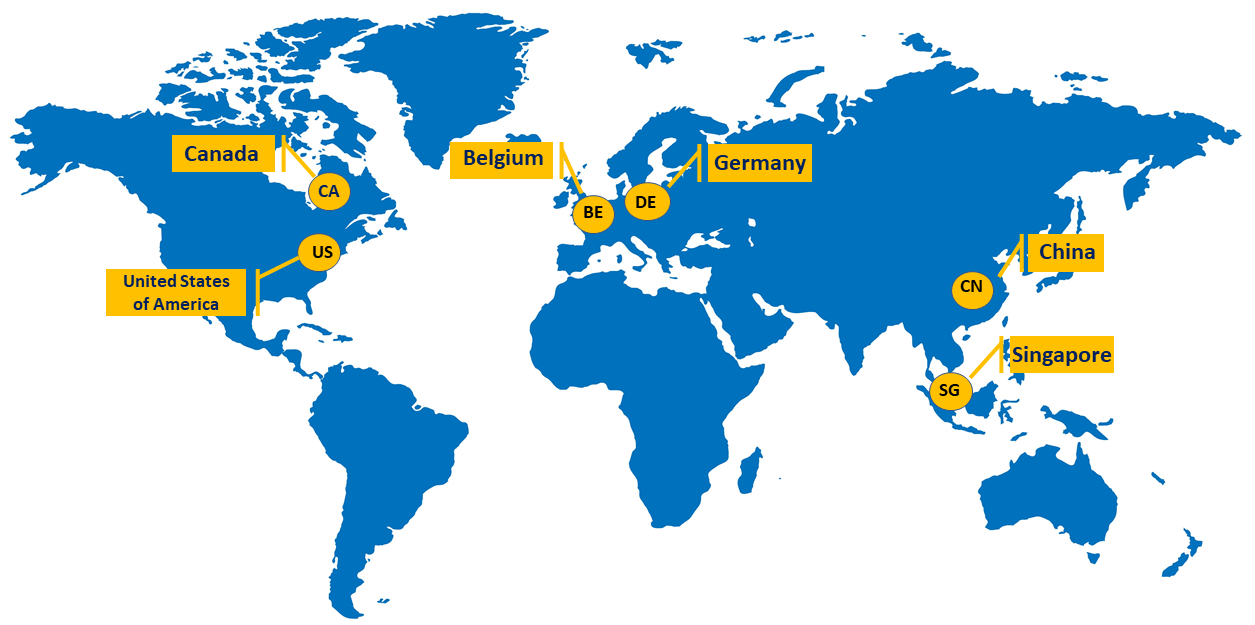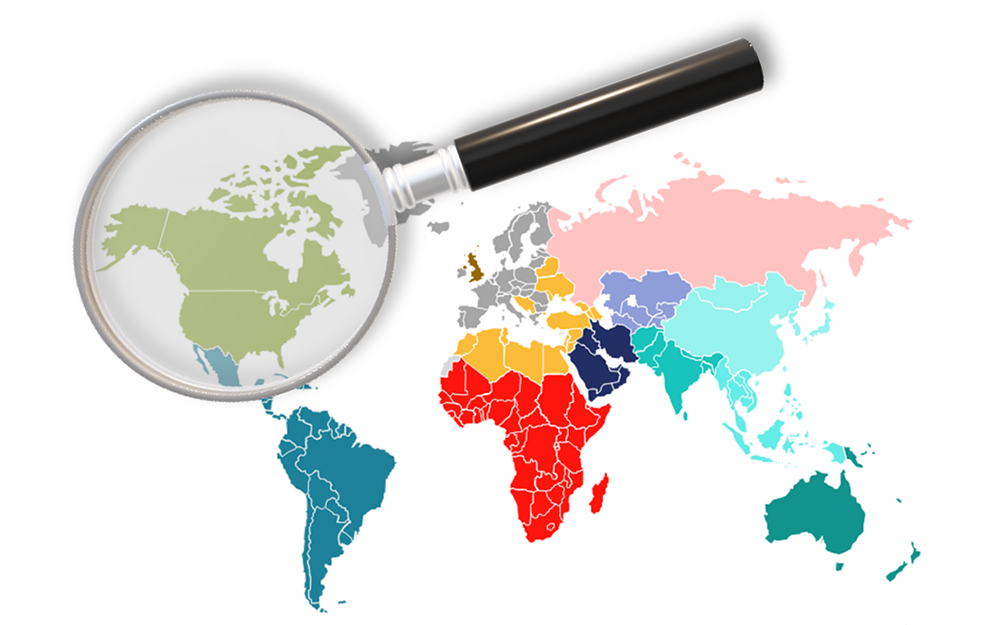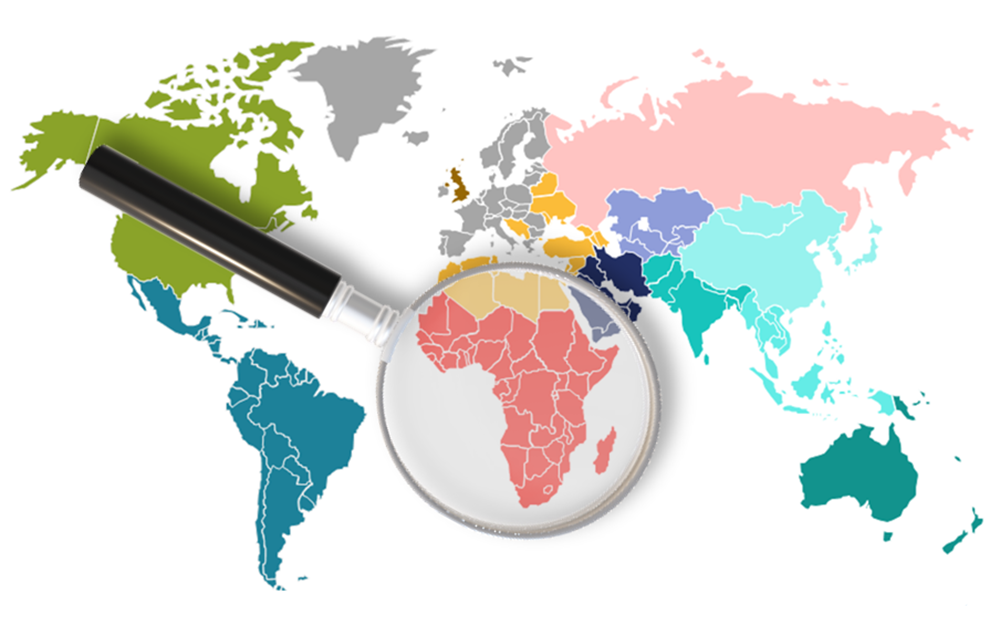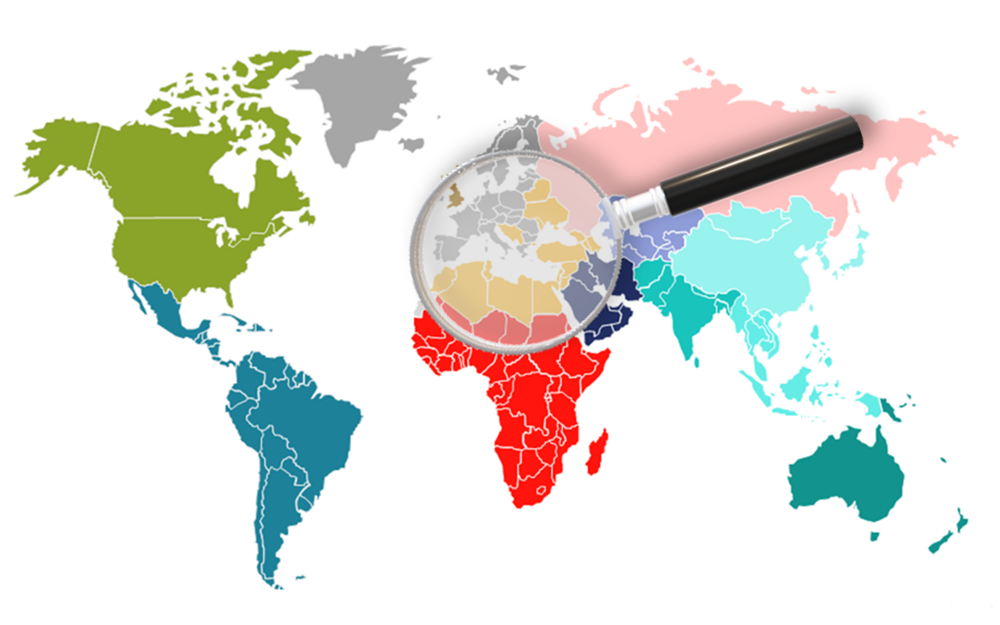As one of the leading aviation authorities worldwide, the European Union Aviation Safety Agency (EASA) works to ensure that EU citizens’ needs for safety and sustainability are met, not just in Europe but at a global level. It also promotes a level playing field for the aviation industry worldwide.
Aviation safety is a cooperative, international effort and does not stop at borders, on land or in the air. To ensure air passengers’ safety on a global level, EASA partners with national, regional and international civil aviation organisations alike.
Taking on board priorities set by the European Commission and considering the impact of COVID-19, EASA has strengthened its strategy for international cooperation, in the pursuit of safety and sustainability.
Our main drivers
EASA’s international cooperation covers four main clusters:

Global Aviation Safety
“…contribute to global aviation safety, in the interest of citizens and industry.”

EU Safety & Environmental Standards
“…promote EU safety and environmental standards and expertise to contribute to a safer and greener aviation worldwide.

Level Playing Field for industry
“… establish a level playing field for the industry and help to remove market barriers.”

Strong Partnership Worldwide
““…provide a sustainable benefit to the partner countries and the EU to build a strong partnership worldwide.”
EASA’s global presence
Most of EASA’s workforce of around 850 aviation experts and administrators work from its European headquarters in Cologne and Brussels, but EASA also has permanent representations in other parts of the world to support the global safety network. These are situated closer to the ‘action’. Take a look at the map to see EASA's global representations.

An additional permanent representation is planned for Panama City, to serve the Latin America and Caribbean regions.
In addition, there are project offices in Costa Rica, Senegal, Thailand, Sri Lanka and Zambia. These project offices are more temporary in nature and exist to serve specific projects. As they are staffed by contractors, they do not require EASA’s own staff to be on site.
ICAO & EASA - global aviation safety partners
On a global level, EASA also closely cooperates with the International Civil Aviation Organization (ICAO), a specialised Agency of the United Nations, on a wide range of aviation topics. Amongst other tasks, EASA supports its Member States in implementing ICAO standards, and works with the European Commission and EASA Member States on coordinating common positions on ICAO matters. This strong partnership with ICAO supports EASA’s international involvement on key topics such as the environment, security, health and safety.
EASA’s Regional Support – 7 regions on 5 continents
EASA implements a wide range of activities which span seven regions on four continents. Each region is different and there is no ‘one fits all’ approach that applies to all of them. EASA works with different individual regional organisations and states to ensure beneficial cooperation.
Take a look at the different regions, which give a very condensed overview of EASA’s objectives and involvement in the different regions.

EASA’s objectives: to promote a trusted and harmonious partnership and to facilitate the mutual exchange of aeronautical products.
EASA’s involvement & presence on-site:
The role of the EASA representative in Washington DC is to enhance cooperation with the US Federal Aviation Administration (FAA), other US institutions, and the US aviation industry. The main aim is to explain and promote the EU system, EASA initiatives and programs. The basis of the cooperation between the US and EU on aviation safety is set by the Bilateral Aviation Safety Agreement (BASA), that has continuously been complemented since its initial signature by new annexes and updated implementation procedures. Other more specific working arrangements exist to support the ever more globalized aviation industry.
The Bilateral Aviation Safety Agreement (BASA) between US and EU entered into force in May 2011.
EASA’s objectives for ICAO:
At ICAO, EASA to be recognised as a leading Regional Safety Oversight Organisation, representing a distinct European region. EASA shall be the centerpiece of the EU’s technical coordination with ICAO and drive safety, air navigation, environmental protection and safety health developments in the EUR/NAT region through close cooperation with ICAO’s Regional Office in Paris.
EASA’s objectives for Canada: to promote a trusted and harmonious partnership and to facilitate the mutual exchange of aeronautical products.
EASA’s involvement & presence on-site:
EASA has one representative based in Montréal, who directly liaises with ICAO, participates in ICAO meetings, provides information on EASA policies and regulatory developments, and maintains a working relationship on technical matters with the ICAO Secretariat. EASA also attends the sessions of the Air Navigation Commission (ANC). Generally, EASA is a key stakeholder at ICAO, participating in many panels and committees.
Through its local representation, EASA also maintains a close relationship with Transport Canada Civil Aviation (TCCA) headquartered in Ottawa – some 200 km from Montreal – and with the Canadian aerospace industry.
The Bilateral Aviation Safety Agreement (BASA) between Canada and EU entered into force in July 2011.
Latin America & Caribbean
EASA’s objective: to enhance the role of the EU as a global actor in the domain of civil aviation, promoting a level playing field on the aviation market through continued and new partnerships with Latin America and Caribbean key partner countries and at regional level.
EASA involvement:
EASA carries out the EU-Latin America and Caribbean Aviation Partnership Project to:
- strengthen institutional relations, deepening dialogue and cooperation between aviation authorities, encouraging regional cooperation and supporting implementation of aviation agreements
- promote industrial exchanges
- increase mutual awareness of aviation best practices, promoting EU standards, raising environmental protection efforts, and encouraging climate action.
EASA’s presence on-site:
Project office in Costa Rica.
Bilateral Aviation Safety Agreement (BASA) between Brazil and EU.

Sub-Saharan Africa
EASA’s objective: to support the harmonisation of standards across the continent and the institutional capacity building of the national aviation authorities, the training of aviation personnel as well as the promotion of the exchange of best practices, be it in safety, the environment or the air transport domains.
EASA involvement:
EASA carries out six different projects in the region to
- help the Regional Safety Oversight Organisations (RSOOs) and their Member States to meet their international obligations in terms of safety (EU-ASA project)
- provide training in order to improve aviation safety in Central Africa (PASTA-CO project)
- give Central Africa the capacity to develop and deliver aviation safety trainings on its own (PAGIRN project)
- improve aviation safety in Zambia (ASSP II project)
- mitigate climate change by reducing CO2 emissions from civil aviation (CORSIA Africa & the Caribbean project)
- support the implementation of the Single African Air Transport Market (Support to AFCAC for the operationalization of SAATM)
EASA’s presence on-site:
Project Office in Lusaka, Zambia

EASA’s objective: to enhance the partnership between the North Asian countries and the EU in the domain of civil aviation through dialogue with authorities, technical exchanges with industry and demonstration of new technologies and concepts; to promote European policies, standards and technologies for safer and greener aviation.
EASA involvement:
EASA carries out three different projects in the region:
- The 2nd EU-China Aviation Partnership Project (APP) is a follow-up of the first EU-China APP which successfully completed 89 activities along its 5+ year duration between 2015 and 2021. Leveraging from this success, this new project continues to strengthen the cooperation between EU and China in civil aviation.
- The EU-Republic of Korea Aviation Partnership Project was kicked-off in 2021 to support exchange and cooperation across a broad range of domains in civil aviation.
- The EU-Japan Cooperation in Civil Aviation will support key strategic areas such as Sustainable Aviation (fostered by the EU-Japan Green Alliance signed in May 2021) and Drones (UAS-UAM).
EASA’s presence on-site:
- Representation Office in Beijing
- Project Office in Beijing
- Technical coordinator in Seoul
The Bilateral Aviation Safety Agreements (BASAs) between China and EU and Japan and EU entered into force in May 2019 and June 2020.
EASA’s objective: to enhance the partnership between the EU and the South Asia region in the domain of civil aviation.
EASA’s involvement:
EASA carries out the EU-South Asia Aviation Partnership Project to:
- foster dialogue between aviation safety authorities, strengthen institutional links and encourage regional cooperation, as well as support implementation of aviation agreements
- facilitate market access for EU industry, reduce barriers and promote industrial exchanges
- increase mutual awareness and promote EU rules and best practices, enhance environmental protection efforts and encourage climate action
EASA’s objective: to promote EU institutional relations in support of safety, sustainability and harmonisation.
EASA’s work can be divided into three areas: building and strengthening EASA’s partnership with civil aviation authorities on regulatory and operational issues, support to the EU’s aviation industry in their relations with regional authorities, and support to the regions’ industry in their relationship with the European Union and EU authorities.
In particular EASA’s technical cooperation projects in the South East Asia region aim at enhancing safety standards, promoting environmental protection and facilitating regulatory harmonisation. These include an emphasis on sustainable aviation, particularly Sustainable Aviation Fuels (SAF) and the Carbon Offsetting and Reduction Scheme for International Aviation (CORSIA).
EASA involvement:
EASA carries out three projects in the region to:
- increase regionalisation and implementation of the ASEAN Single Aviation Market (ARISE Plus Civil Aviation Project)
- support EU-South East Asian institutional dialogue and promote safety (EU-SEA Aviation Partnership Project)
- mitigate climate change by reducing CO2 emissions from civil aviation (EU-SEA CCCA CORSIA)
EASA’s presence on-site:
- Representation Office in Singapore
- Project Office Bangkok, Thailand
EU Neighbourhood

EASA’s objective: A pan-European approach to aviation safety and the implementation of the highest aviation safety standards across Europe
EASA involvement:
To support our partners in applying EU aviation safety standards, EASA has implemented three technical assistance projects:
- Instrument for Pre-accession Assistance Project for the Western Balkans
- Eastern Partnership /Central Asia Project for the Eastern Neighbourhood
- Euro Med Transport Aviation Project for the Euro-Mediterranean/Southern Neighbourhood
Through a network of partnerships with the aviation authorities of the neighbouring states, EASA supports the implementation of the EU aviation agreements concluded with countries in the Western Balkans and in the eastern and southern EU neighbourhood and ensures that similar high standards of aviation safety are implemented across Europe and in its immediate neighbourhood.
Stay informed on EASA's International activities
For more information on EASA's international activities on EASA Light, make sure to visit us regularly for all updates.
For a complete overview on EASA's International Cooperation activities, take a look at EASA Pro.
